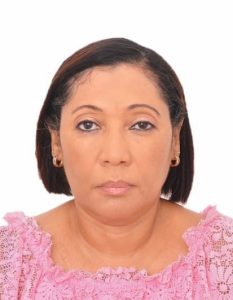Overview
Okaikwei North Municipal Assembly is one of the Two Hundred and Sixty -one (261) Metropolitan, Municipal and District Assemblies (MMDAs) in Ghana and among the twenty-nine (29) MMDAs in the Greater Accra Region. The Okaikwei North Municipal Assembly is among the six (6) newly created Assemblies caved out of the Accra Metropolitan Assembly (AMA). It was established on 14th November, 2017 and inaugurated on 15th March, 2018 under the Legislative Instrument (L.I 2307) and with the capital at Abeka.
Okaikwei North Municipal Assembly lies between Latitude 5040’21’’ and 5033’15’’N and Longitude 0016’ 15W to 0018’21’’W. It shares a boundary with Ga West and Ga North to the north; Accra Municipality to the South; Ablekuma North and Ga Central to the West; and Ayawaso West to the East.
It has a total land area of about 22.117Km2 which is about 0.68% of the total land area of the Greater Accra Region.
demographic characteristics
The 2022 Population and Housing Census (2022 PHC) put the Municipal Assembly’s population at 160464 with a growth rate of about 3.1%. Females constitute 82,025 while males formed 78,421.
electoral areas
The Municipality has eleven (11) Electoral Areas which include Apenkwa, Wuoyenman, Blemagor, Olengele Koona, Gbemomo, Anorhuma, Akweteman, Nii Boiman, Achimota, Abofu and Anumle. The Assembly has eighteen (18) Assembly Members, One Chief Executive and two (2) Members of Parliament.
communities within the municipality
There are 9 main communities (Achimota Anumle; Christian Village; Akweteyman; New Fadama; Nii Boiman; Lapaz; New Tesano; Keseman; Achimota Forest) are further divided into 11 electoral areas which include Apenkwa, Wuoyenman, Blemagor, Olengele Koona, Gbemomo, Anorhuma, Akweteman, Nii Boiman, Achimota, Abofu and Anumle.
Cultural
The major festival celebrated in the municipality is Homowo. The word “Homowo” means “hooting at hunger”. The festival is characterized by rituals such as the sprinkling of kpoikpoi (the festival dish) to the gods and ancestors for spiritual protection, procession of twins through the principal streets, traditional drumming and dancing and general merry-making.
road network
Road network to major towns and villages is generally poor and inadequate. The district has very poor road network as the only tarred road is the one from Tamale to Salaga through the district. Most of the roads are not motor able all year round and gets worse during the raining season when settlements can only be accessed by only motorbikes and bicycles with difficulty or not accessible at all.
religious representation
There is the existence of variety of religions in the Municipality. There are Christians (78.7) comprising of Catholics, Protestants and Pentecostals/ charismatics. Islam represents 17.0 percent with traditionalists representing 0.3 percent while 3.0 percent have no religion with other religious bodies constituting 1.0 percent.
road network in the municipality
* The Municipality has a total of 163.8 kilometers
* 74.4 kilometers (45%) is tarred or Asphalted
* c89.4 kilometers Unpaved roads (55%)
* The Municipality has about 6 kilometer of the Nation’s Number One (N1) road which is the
Trans- Continental Road from Lomé (Togo) to Abidjan (Ivory Coast).
health
The Municipality has 24 health facilities: 3 public and 21 private facilities.
The Doctor – Patient ratio stands at 1:15,754 with 22 doctors while the Nurse-Patient ratio is 1:1,243, with 274 nurses. Infant mortality is 33.9 deaths per 1000 live births and child mortality,46 deaths per 1000 live births. Maternal Mortality Ratio is 148 and Malaria Case Fatality, 0.61.
education
In the 2020/21 academic year, the Municipality had a total of 30 Public Kindergartens, 25 Primary schools and 25 Junior High Schools at the Public Basic Education Level; it also had 3 Public Senior High Schools, one Vocational School.
The Municipality has a number of private schools made up of 90 Kindergartens, 90 Primary Schools and 34 Junior High Schools, two Senior High Schools, one Vocational School and a midwifery school
water and sanitation management
GWC Water supply coverage to the municipality is about 86% but only 45% of the house population has a household or at best yard connection and this category include the urban rich.
The Municipal Assembly generates about 680 tonnes of solid waste daily. Out of this, 80% are collected. The 20% (136 tonnes) uncollected solid wastes find their way into drains and open spaces.
housing
t is estimated that there are 12,915 houses in the Municipality with a total number of households standing at 40,899 and an average household size of 4.6 persons, a figure which is higher than both the regional and national figures of 3.9 per cent and 4.5 per cent respectively. Out of this figure, 43.9 per cent own their houses and again 71.3 of these house owners are males.



